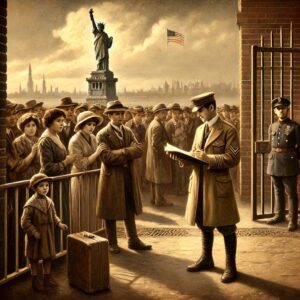In 1917, the United States took a decisive step in shaping its immigration policies, one that would define its borders and the people allowed to cross them. The passage of the Immigration Act of 1917 marked one of the most sweeping restrictions on immigration in American history. It was a bold, controversial move that reflected growing fears, prejudices, and shifting national priorities in the early 20th century. For many, it was the moment the nation’s open-door policy slammed shut.
The law introduced several new restrictions that dramatically changed who could enter the United States. Most notably, it created the “Asiatic Barred Zone,” effectively banning immigrants from a vast region stretching from the Middle East to Southeast Asia. This was in addition to the long-standing Chinese Exclusion Act of 1882, reinforcing the idea that Asian immigrants were unwelcome. The act also imposed a literacy test, requiring immigrants over the age of 16 to prove they could read and write in their native language. While this test may seem like a simple requirement today, at the time, it was a calculated barrier designed to keep out those from poorer, less-educated backgrounds—primarily immigrants from Eastern and Southern Europe.
The passage of the Immigration Act of 1917 wasn’t just about border control; it was a reflection of the deep anxieties brewing in American society. World War I had intensified fears of foreign influence, and there was a growing belief that too many immigrants from “undesirable” regions threatened American culture and security. Labor unions, too, played a significant role in pushing for the law, arguing that an influx of cheap foreign labor would undermine American workers. The political climate was charged with xenophobia, eugenics-based thinking, and the desire to maintain what many saw as America’s racial and cultural identity.
For the immigrants affected, the law was devastating. Families were separated, dreams were shattered, and entire communities found themselves locked out of a country that had long been seen as a beacon of hope. Many who had planned to make the journey to America now had to look elsewhere—or give up entirely. The act set a precedent for even stricter immigration laws to come, paving the way for the restrictive quotas of the 1920s that would further reshape America’s demographics.
Looking back, the Immigration Act of 1917 serves as a reminder of how fear and prejudice can shape national policy. It also raises important questions that still resonate today: Who gets to be an American? How do we balance security with opportunity? And what happens when a nation turns its back on those seeking a better life? More than a century later, the debates over immigration are as heated as ever, proving that history doesn’t just repeat itself—it evolves.

